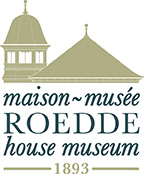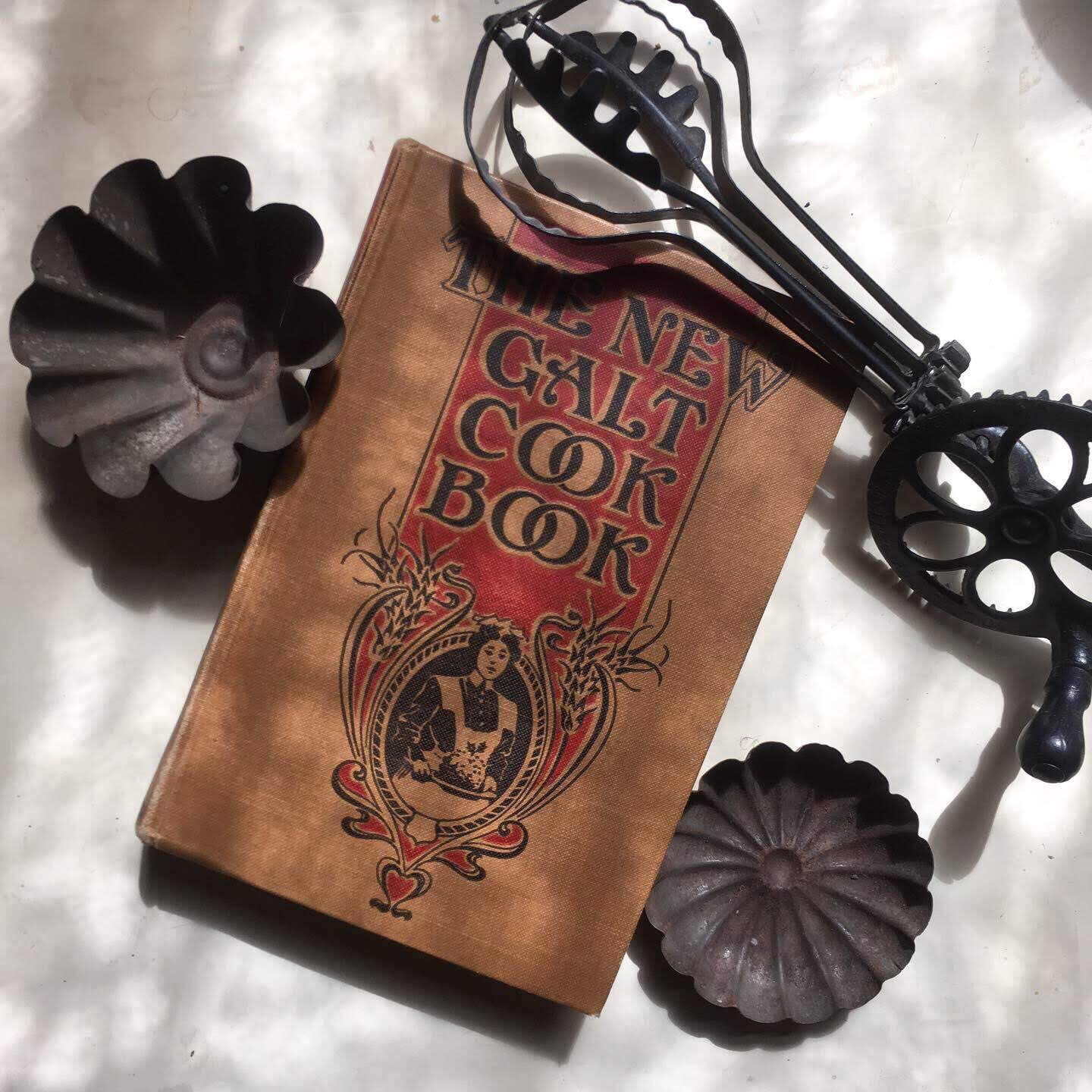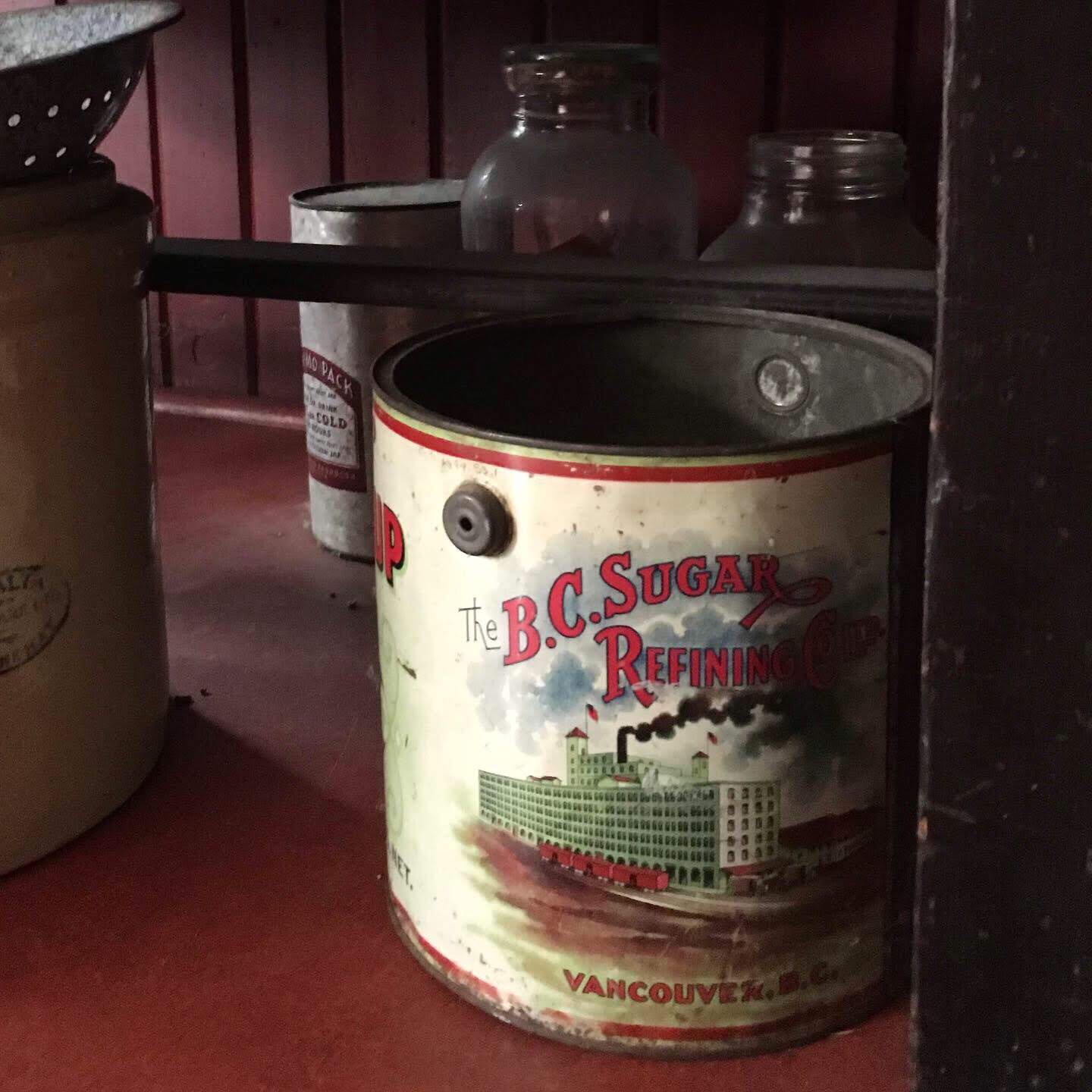This room’s restoration is remarkably close to its original scheme. The wallpaper was silk-screened by the same expert who recreated the ceiling papers in the downstairs rooms.
The kitchen was the most comfortable room in the House, warm and with pleasant aromas of Matilda’s baking. The coal and wood burning stove acted as the furnace system for the whole House. The restoration turned up newspapers packed in wall cavities for insulation.
Pre WW1, stores carried few “prepared” foods; hence the lack of extensive cupboard and shelf space as found in today’s kitchens. The pantry area stored home canned and bottled foods, as well as china and glassware. An ice chest was used for perishables.
The unusually low kitchen sink, just the right height for 4′ 11” Matilda, was installed when indoor plumbing was added to the House in the very early 1900’s. Hanging nearby is a soap “raddler” containing small bits of bar soap for creating suds. Under the sink are more household items and labour-saving devices. White articles of clothing were boiled with blueing in the copper boiler on the stove in order to keep their whiteness. In inclement weather, the wooden drying rack would raise the washing up above the warm stove.
Slide 1: Weighted floor polisher and hand-pump suction vacuum.
Slide 2: The original kitchen sink, custom made for Matilda’s height.
Slide 3: Bread machine with instructions on how to make bread.
Slide 4: Dough box used for proofing bread.
Slide 1: Original cookbooks from the period.
Slide 2: Rogers Sugar Tin- a nod to the story of Roedde son William who was involved in Vancouver first pedestrian – car accident in 1900 after being unexpectedly hit by Benjamin Rogers driving his automobile (thankfully William was more startled than hurt)! Benjamin had previously been given a speeding ticket for driving 14mph.
Slide 3: The shotgun, above the back door, brings to mind the story in the City Archives about Bill Roedde (aged nine) shooting ducks around Stanley Park.



